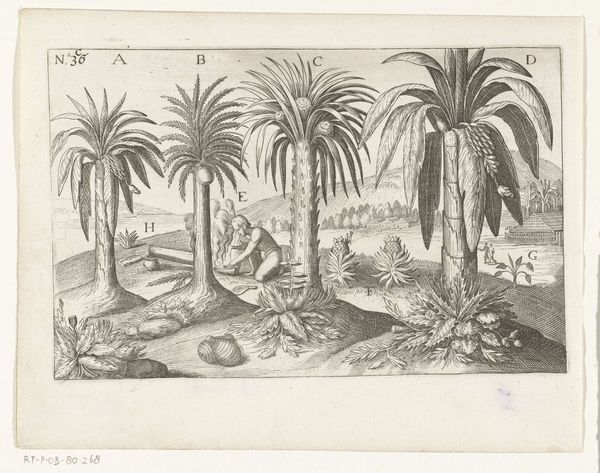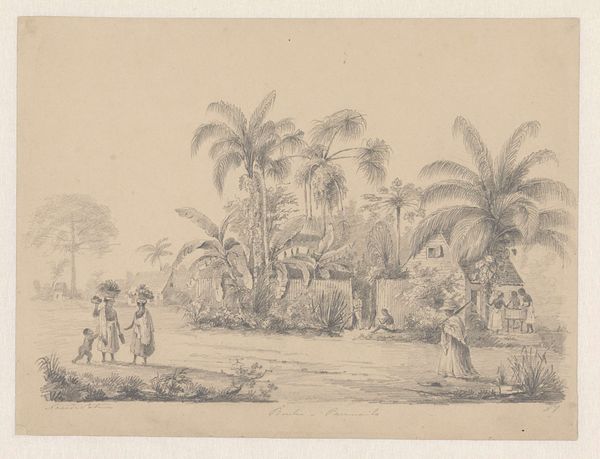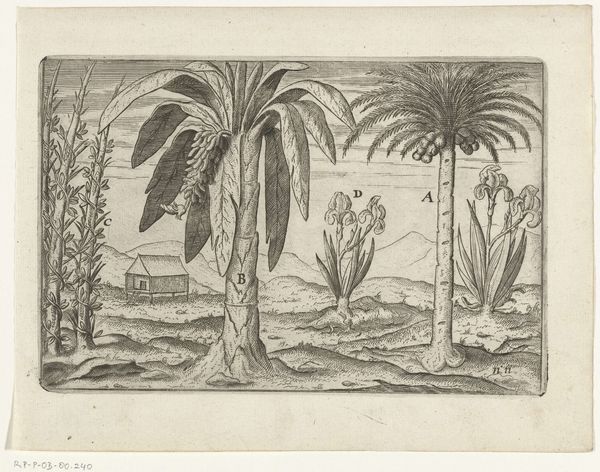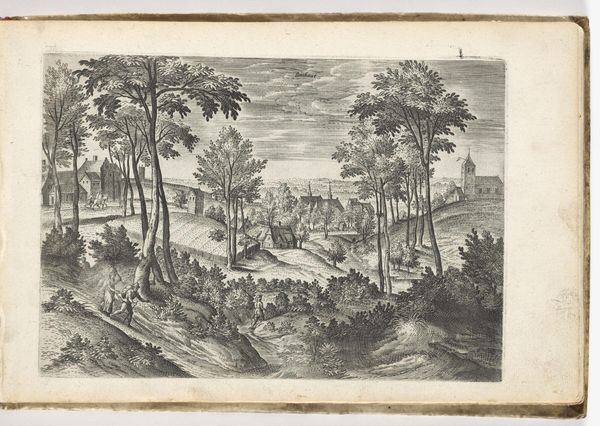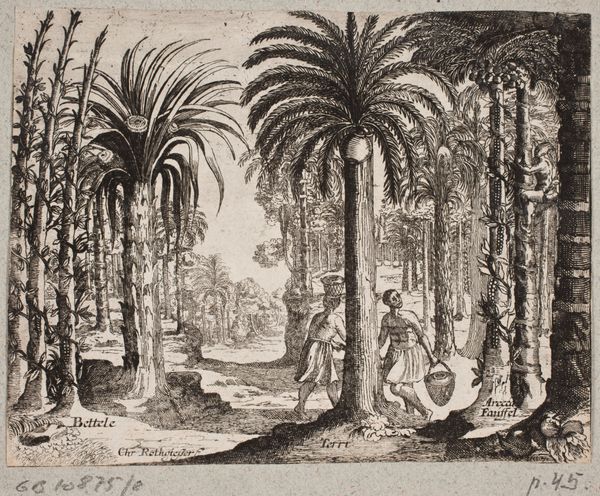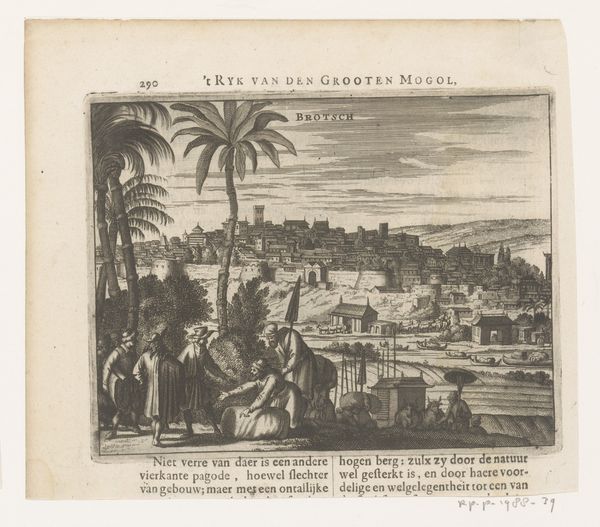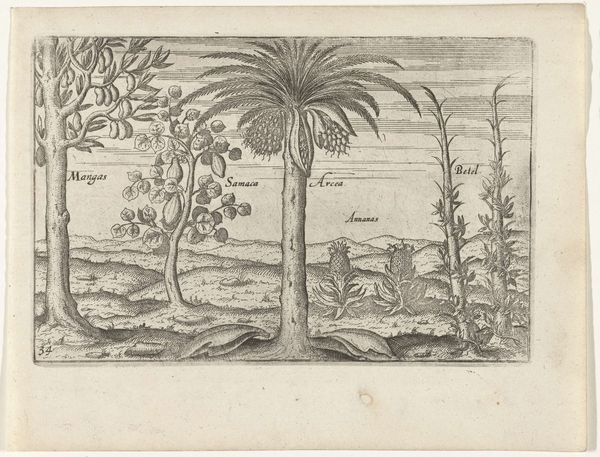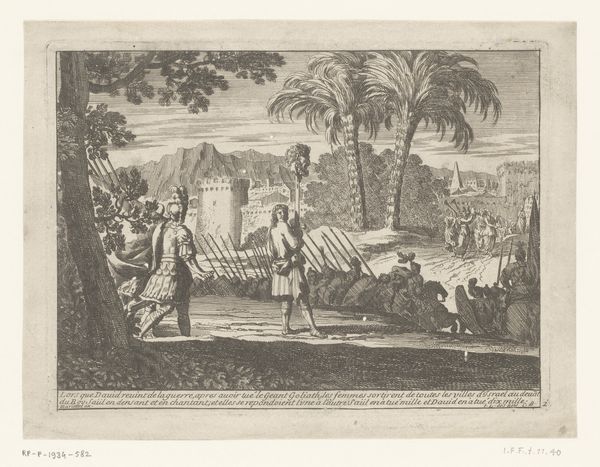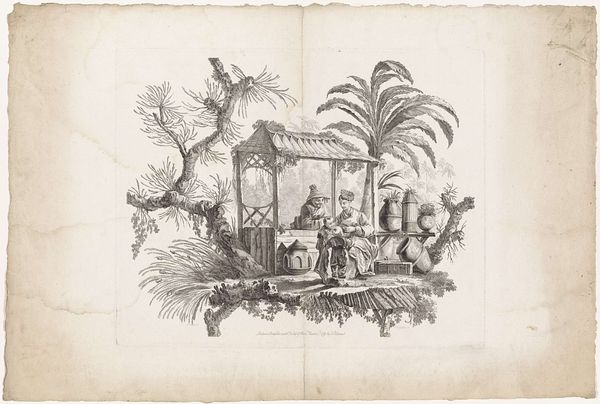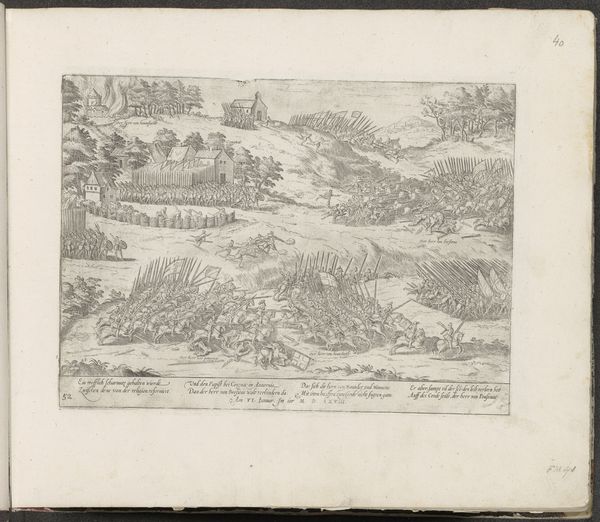
print, engraving
#
dutch-golden-age
# print
#
landscape
#
figuration
#
engraving
Dimensions: height 190 mm, width 236 mm
Copyright: Rijks Museum: Open Domain
Curator: This is "Trees and Spices," an engraving attributed to Romeyn de Hooghe. It was likely created sometime between 1682 and 1733, placing it squarely in the Dutch Golden Age. Editor: My first thought is how intricately rendered this landscape is, given it’s an engraving. The sheer density of lines creates a surprising sense of depth. It evokes a rather melancholic feeling despite the presence of figures. Curator: I agree. De Hooghe was masterful in his ability to articulate tonal values through line. It is precisely that dense, almost chaotic arrangement of marks that gives it that brooding atmosphere, though you’re right, there are lots of small human and animal figures bustling in this scene. Editor: The figures actually seem to emphasize the weight of the trees. I am drawn to how they are arranged throughout this print: small groups, each enacting some aspect of work in the extraction of goods. This image serves almost as propaganda for the East India Company's activities during the Dutch Golden Age. We see ourselves in an imagined distant landscape where we seem to be "in control." Curator: A particularly salient point, that there's a very structured distribution of compositional elements. Notice the balance between the organic forms of the trees and the regimented, descriptive texts that frame the image? These textual additions seem almost like scientific cataloging, which lends the entire work an air of supposed authenticity and reinforces the perception of control over this new, "discovered" world. Editor: That push-pull relationship underscores the complexity of Dutch colonialism. The print's careful organization tries to tame what in actuality was brutal and chaotic. The "naturalness" of the landscape naturalizes colonial violence, camouflaging an exploitative, economic endeavor in picturesque imagery. Curator: A fascinating perspective. The structural contrast truly highlights this underlying tension, doesn't it? Editor: Definitely a rich piece for pondering the visual rhetoric of colonial expansion. Curator: A perfect opportunity to question our role as spectators and consumers in these complicated and layered histories.
Comments
No comments
Be the first to comment and join the conversation on the ultimate creative platform.

